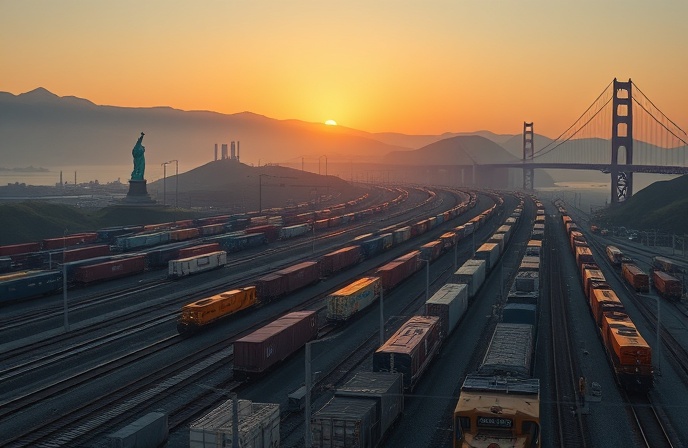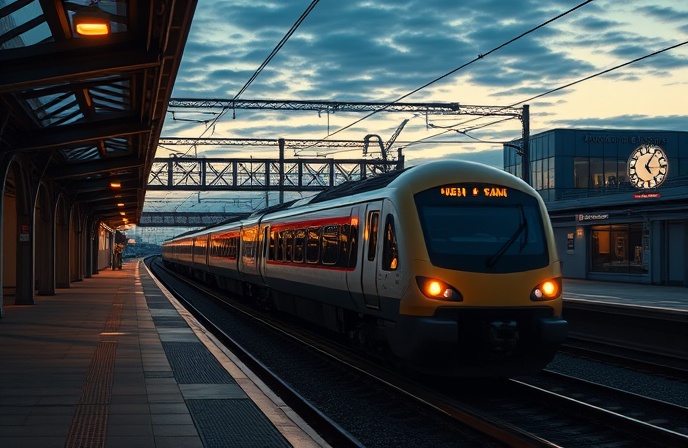Knorr-Bremse: Milan Metro’s Tech Upgrade

This article delves into the significant contract awarded to Knorr-Bremse by Hitachi Rail for the supply of crucial components for a new fleet of metro trains destined for Milan, Italy. This agreement underscores the growing importance of advanced railway technology in enhancing the efficiency, safety, and sustainability of urban transit systems. We will examine the specifics of the contract, focusing on the types of equipment provided, the implications for the Milan metro system, and the broader context of Knorr-Bremse’s strategic positioning within the global rail industry. The analysis will extend beyond this particular contract to explore Knorr-Bremse’s wider technological advancements in areas such as automatic coupling systems and automatic train operation (ATO), highlighting their commitment to innovation and shaping the future of rail transportation. The discussion will also consider the broader impact of such technological advancements on urban rail networks and the overall passenger experience.
Knorr-Bremse’s Contract with Hitachi Rail for Milan Metro Trains
Knorr-Bremse, a leading supplier of braking systems and other rail vehicle components, has secured a substantial contract from Hitachi Rail to equip 46 new metro trains for Milan’s M1, M2, and M3 lines. This contract encompasses the delivery of several key systems, including the company’s innovative new couplers designed for passenger train applications. The couplers represent a significant upgrade to the current system, promising improved safety and efficiency in the daily operations of the Milan Metro. In addition to the couplers, Knorr-Bremse will supply door systems under its IFE (train entrance systems) brand, ensuring seamless passenger flow. Further enhancing operational capabilities and safety, the contract also involves delivering pneumatic braking systems equipped with FlexControl Modular brake control units, which contribute to a more precise and responsive braking system. The delivery of these components is scheduled to commence in the fourth quarter of 2023, extending into the first quarter of 2026. The first trains incorporating these upgrades are slated to enter service in 2024.
Impact on the Milan Metro System
The integration of Knorr-Bremse’s advanced technologies will significantly enhance the performance and reliability of the Milan metro system. The new couplers, door systems, and braking systems contribute to improved safety, smoother operation, and better overall passenger experience. The modernization of the Milan metro aligns with the city’s efforts to improve its public transport infrastructure, catering to the increasing passenger demand and ensuring a higher level of service quality. The anticipated reduction in maintenance needs and increased reliability translate to cost savings and enhanced operational efficiency for the Milan’s ATM (Azienda Trasporti Milanesi) municipal transit authority which operates the lines.
Knorr-Bremse’s Technological Advancements in Rail
This contract highlights Knorr-Bremse’s ongoing commitment to innovation in the rail sector. The company is actively involved in developing a Digital Automatic Coupler (DAC), also known as FreightLink, for freight trains. This technology, combined with Knorr-Bremse’s automation systems, enables intelligent functions, digital services, and smart, predictive maintenance, leading to significant improvements in efficiency and cost-effectiveness for freight operations. Furthermore, Knorr-Bremse’s collaboration with Thales on Automatic Train Operation (ATO) solutions signifies the company’s strategic focus on autonomous and automated train technologies. These advancements position Knorr-Bremse as a key player in shaping the future of rail transportation.
Broader Implications for the Rail Industry
The Milan metro contract and Knorr-Bremse’s broader technological initiatives illustrate the accelerating trend towards automation, digitalization, and enhanced safety features in the rail industry. The demand for improved efficiency, reduced operational costs, and enhanced passenger comfort is driving the adoption of advanced technologies globally. This focus on innovation necessitates collaborations across various sectors, as evidenced by Knorr-Bremse’s partnership with Thales. The successful implementation of these technologies not only improves the performance of existing rail networks but also lays the foundation for the development of future, more sophisticated and sustainable rail systems. The investment in modern infrastructure and cutting-edge technology, as exemplified by this contract, is essential for the expansion and improvement of reliable, efficient, and sustainable rail mobility worldwide.
Conclusions
Knorr-Bremse’s contract with Hitachi Rail for the Milan metro represents a significant milestone in the advancement of urban rail technologies. The delivery of advanced couplers, door systems, and braking systems will significantly enhance the safety, efficiency, and passenger experience within the Milan metro system, aligning with the city’s commitment to a modernized, reliable, public transit infrastructure. This project’s success hinges on the seamless integration of these sophisticated components, demanding precise coordination between Knorr-Bremse, Hitachi Rail, and the ATM. The broader context, however, places this contract within Knorr-Bremse’s broader commitment to innovation within the rail industry. Their parallel development of the Digital Automatic Coupler (DAC) and collaboration with Thales on ATO solutions underscores their vision for a future of automated and digitally enhanced rail transportation. This forward-thinking strategy positions Knorr-Bremse as a leader, driving the industry’s transition towards more sustainable, efficient, and passenger-centric rail solutions. The successful implementation of these technologies in Milan will serve as a model for other cities seeking to modernize their urban rail networks and improve the overall quality of public transportation. Ultimately, this contract symbolizes a crucial step towards a more technologically advanced, and consequently safer and more efficient, future for global rail systems.





